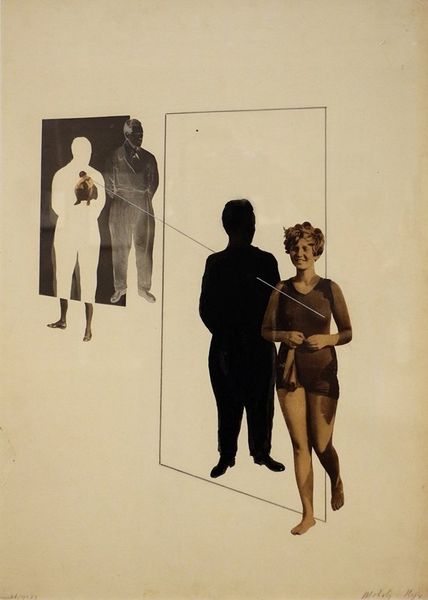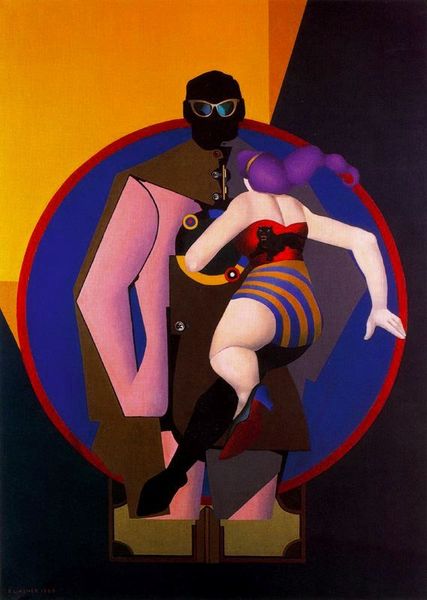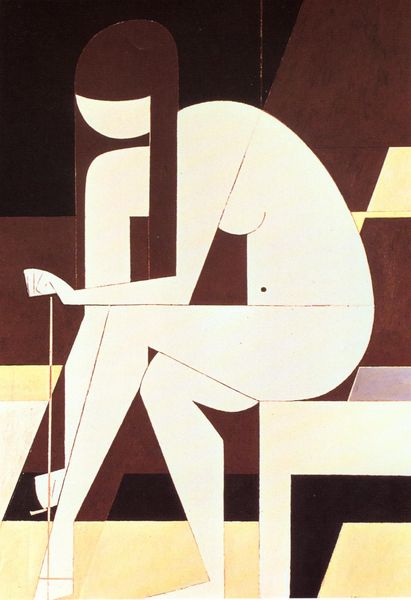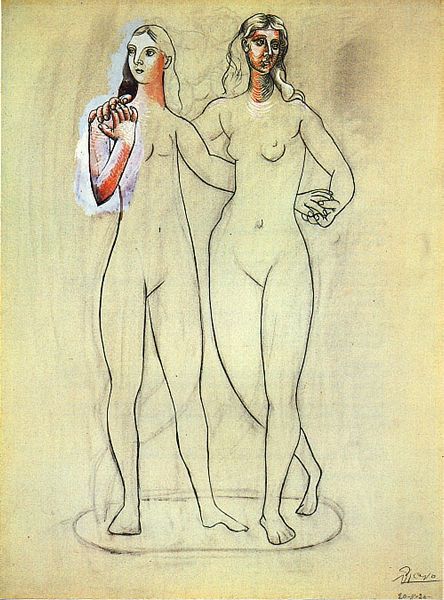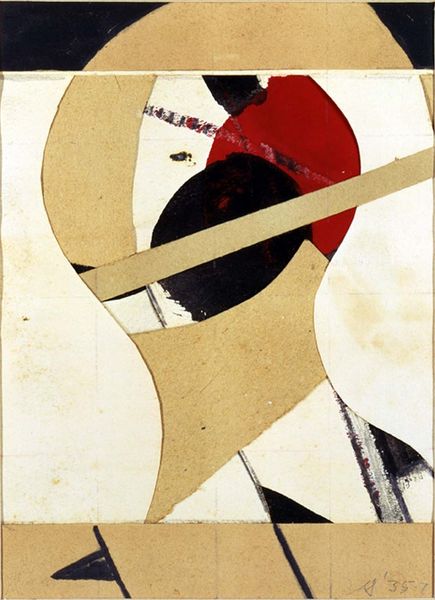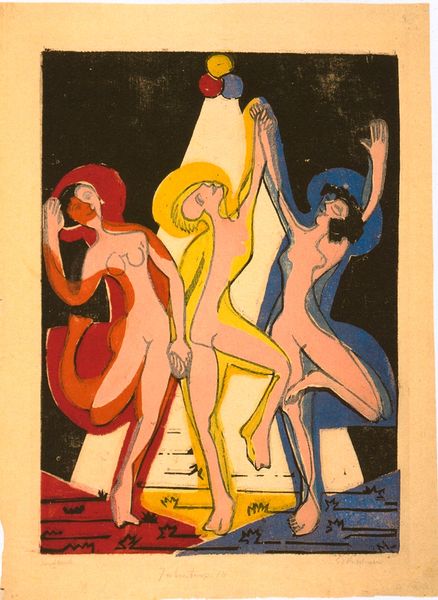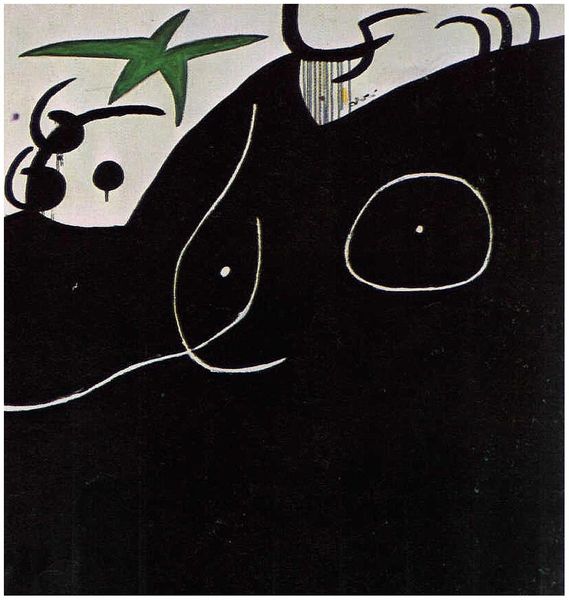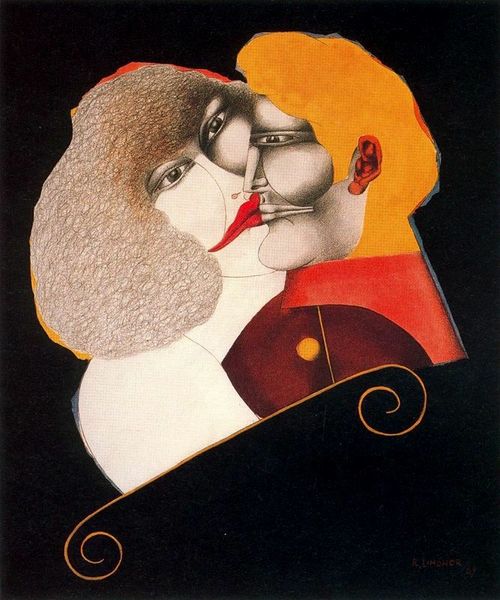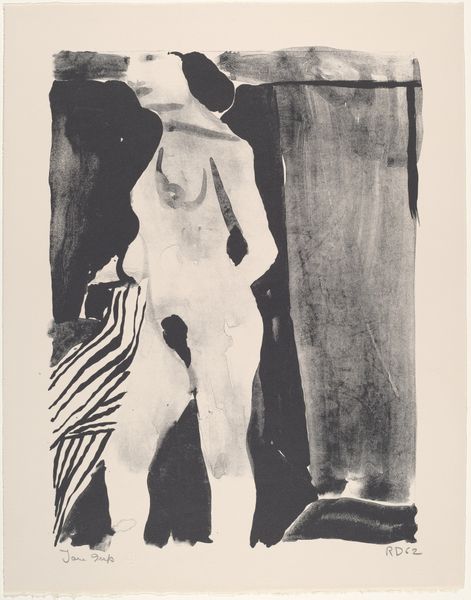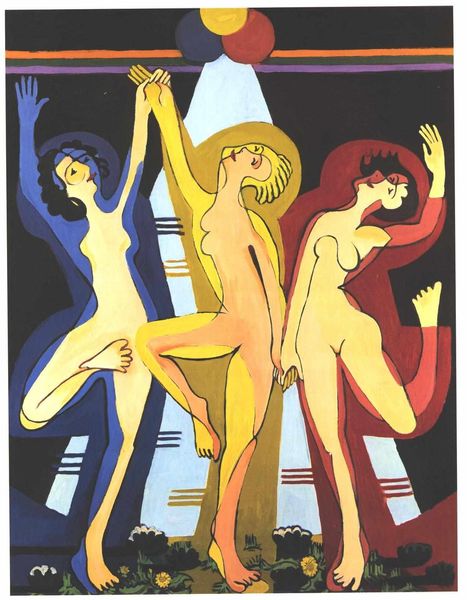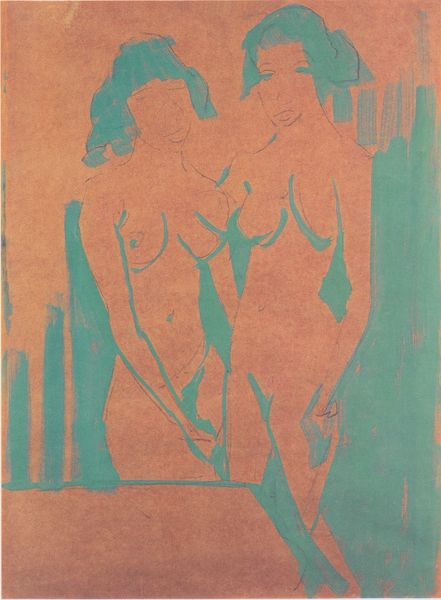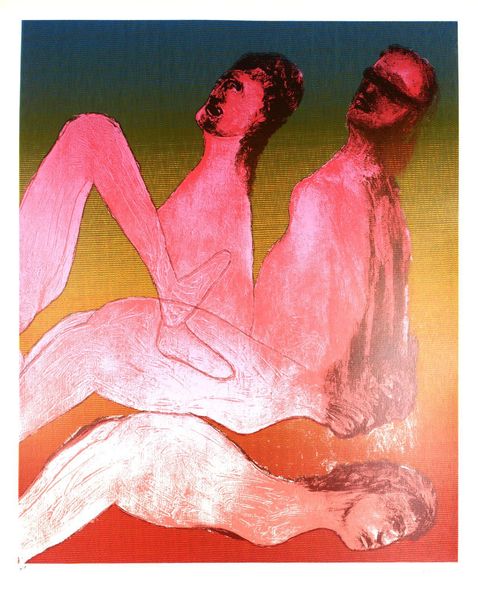
#
portrait
#
pop art
#
figuration
#
dada
#
intimism
#
group-portraits
#
abstraction
#
nude
Dimensions: 186 x 150 cm
Copyright: Public domain US
Editor: This is Francis Picabia’s "Spanish Night," from 1922. I'm struck by how stark the contrast is; the black and white division creates a dramatic effect. What's your take on this piece? Curator: That stark contrast is certainly deliberate, highlighting the dynamics of power, wouldn't you agree? The targets on the female form alongside the male figure's gesture feel charged. I'm drawn to understanding it through the lens of feminist theory and the patriarchal gaze present even within avant-garde movements like Dada. What comes to mind when you look at the gesture the male figure makes? Editor: It almost looks like he is writing or creating... Perhaps a caricature? It feels active but also maybe aggressive, especially in the context of the targets. Curator: Exactly. And consider this was created in the wake of the First World War. How might that history and social context, the widespread disillusionment and anxieties about masculinity, inform our understanding of the male figure’s performative actions here? It also makes me think about cultural appropriation, and the exoticizing lens applied to Spanish culture at that time. Editor: I see what you mean. So, it's not just an abstract composition, but it's really commenting on broader societal issues through these stark figures and symbols? Curator: Precisely. Picabia is prompting us to confront uncomfortable questions about gender, power, and representation. How can we interpret that symbolism to think about identity? Editor: This has made me rethink my initial view of it being just about the contrasting colors. I'm now seeing how many layers there are. Curator: Agreed. And it’s through these dialogues and challenging of initial reactions that we can start unpacking some difficult histories.
Comments
No comments
Be the first to comment and join the conversation on the ultimate creative platform.
